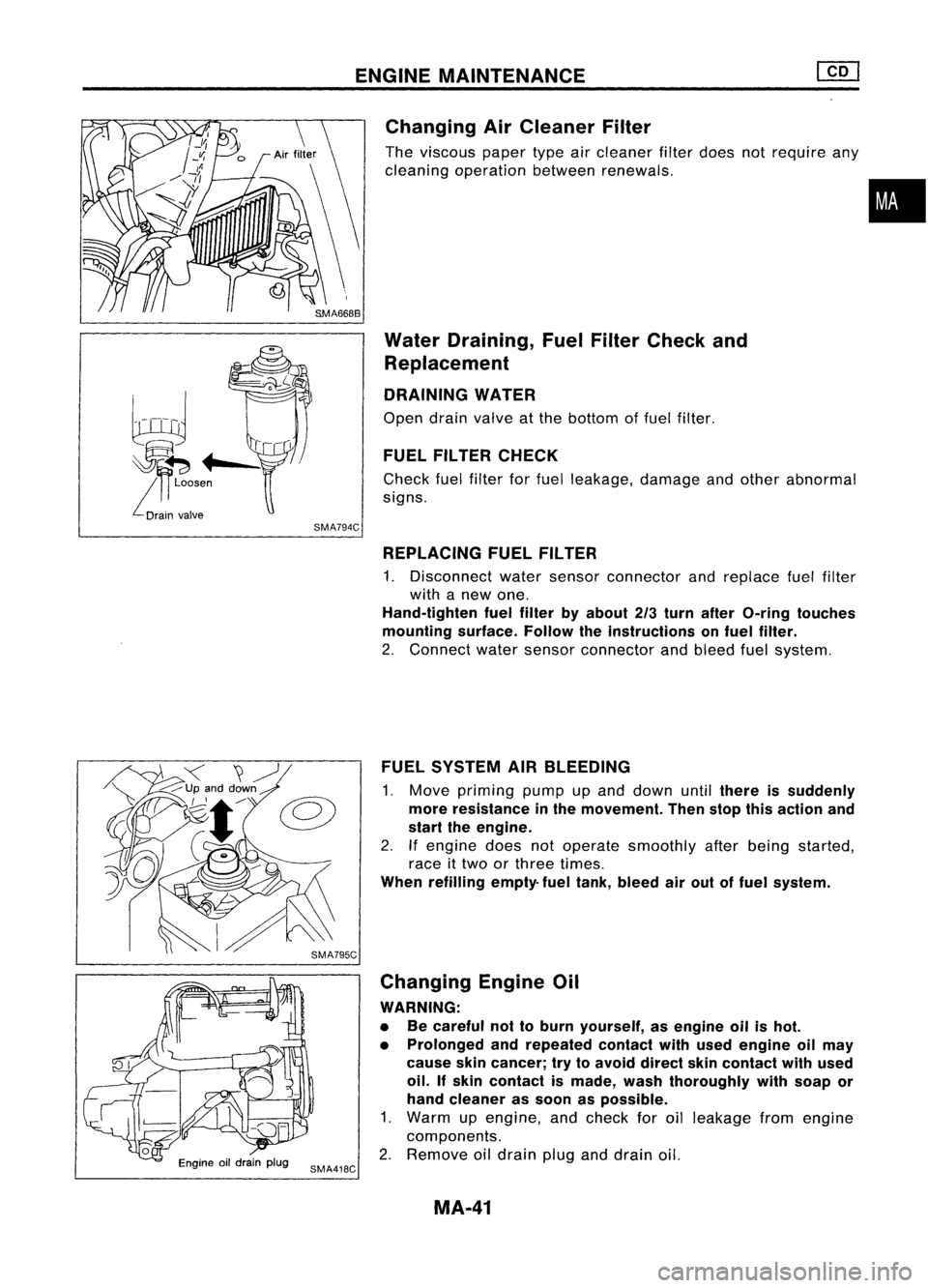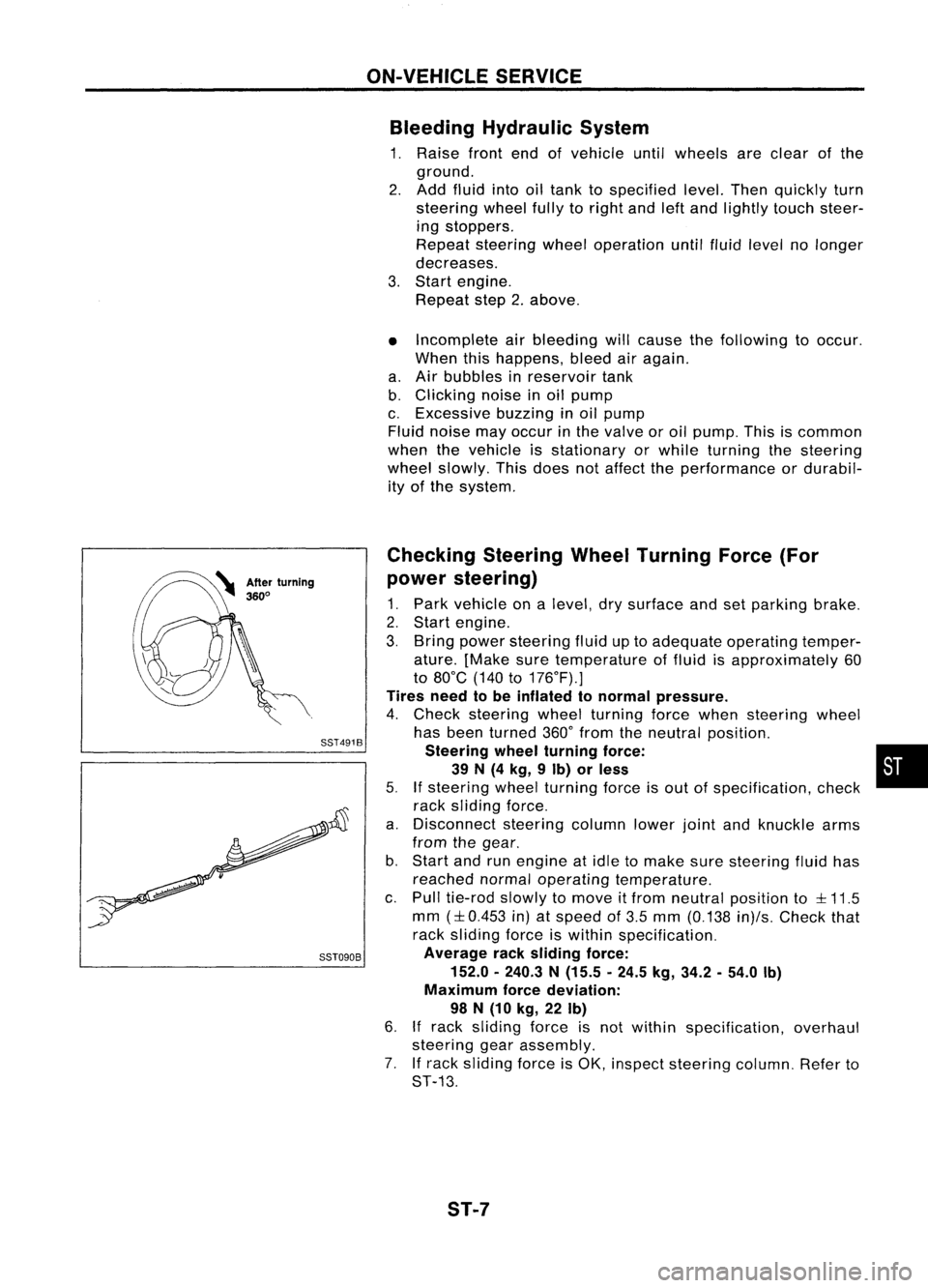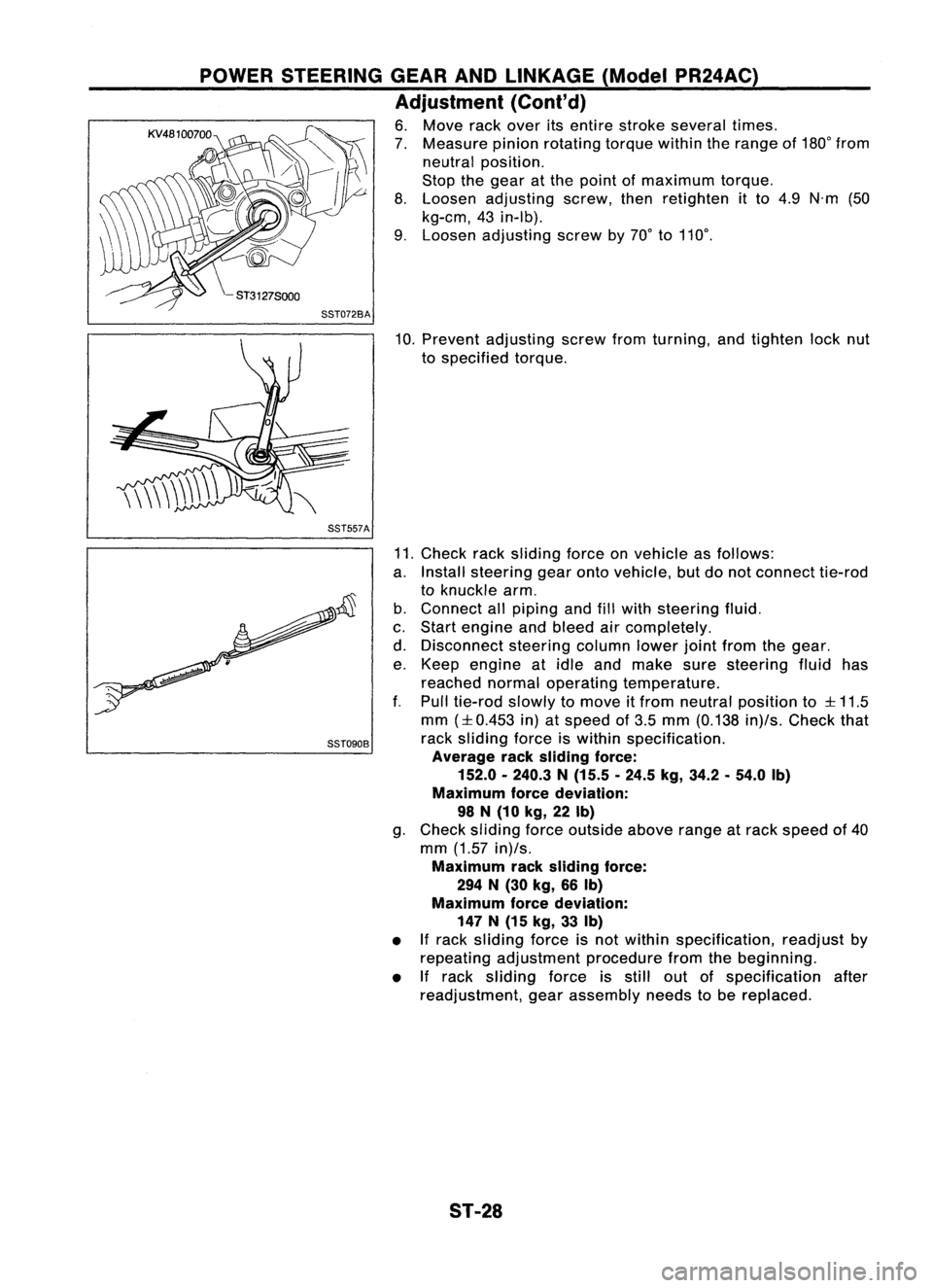Page 1527 of 1701

ENGINEMAINTENANCE
Changing AirCleaner Filter
The viscous papertypeaircleaner filterdoes notrequire any
cleaning operation betweenrenewals.
Water Draining, FuelFilter Check and
Replacement
DRAINING WATER
Open drainvalve atthe bottom offuel filter.
FUEL FILTER CHECK
Check fuelfilter forfuel leakage, damageandother abnormal
signs.
•
SMA794C REPLACING FUELFILTER
1. Disconnect watersensor connector andreplace fuelfilter
with anew one.
Hand-tighten fuelfilter byabout 2/3turn after O-ring touches
mounting surface.Followtheinstructions onfuel filter.
2. Connect watersensor connector andbleed fuelsystem.
FUEL SYSTEM AIRBLEEDING
1. Move priming pumpupand down until
there issuddenly
more resistance inthe movement. Thenstopthisaction and
start theengine.
2. Ifengine doesnotoperate smoothly afterbeing started,
race ittwo orthree times.
When refilling empty-fueltank, bleed airout offuel system.
Changing EngineOil
WARNING:
• Becareful nottoburn yourself, asengine oilishot.
• Prolonged andrepeated contactwithused engine oilmay
cause skincancer; trytoavoid direct skincontact withused
oil. Ifskin contact ismade, washthoroughly withsoap or
hand cleaner assoon aspossible.
1. Warm upengine, andcheck foroilleakage fromengine
components.
2. Remove oildrain pluganddrain oil.
MA-41
Page 1673 of 1701

SST491B
SST090B ON-VEHICLE
SERVICE
Bleeding Hydraulic System
1. Raise frontendofvehicle untilwheels areclear ofthe
ground.
2. Add fluid intooiltank tospecified level.Thenquickly turn
steering wheelfullytoright andleftand lightly touchsteer-
ing stoppers.
Repeat steering wheeloperation untilfluid level nolonger
decreases.
3. Start engine.
Repeat step2.above.
• Incomplete airbleeding willcause thefollowing tooccur.
When thishappens, bleedairagain.
a. Air bubbles inreservoir tank
b. Clicking noiseinoil pump
c. Excessive buzzinginoil pump
Fluid noise mayoccur inthe valve oroil pump. Thisiscommon
when thevehicle isstationary orwhile turning thesteering
wheel slowly. Thisdoes notaffect theperformance ordurabil-
ity ofthe system.
Checking SteeringWheelTurning Force(For
power steering)
1. Park vehicle onalevel, drysurface andsetparking brake.
2. Start engine.
3. Bring power steering fluiduptoadequate operating temper-
ature. [Make suretemperature offluid isapproximately 60
to 80°C (140to176°F).]
Tires needtobe inflated tonormal pressure.
4. Check steering wheelturning forcewhen steering wheel
has been turned 360°from theneutral position.
Steering wheelturning force: •
39 N(4 kg, 9Ib) orless
5.
If
steering wheelturning forceisout ofspecification, check
rack sliding force.
a. Disconnect steeringcolumnlowerjointandknuckle arms
from thegear.
b. Start andrunengine atidle tomake suresteering fluidhas
reached normaloperating temperature.
c. Pull tie-rod slowlytomove itfrom neutral position to
::l::
11.5
mm
(::l::
0.453 in)atspeed of3.5 mm (0.138 in)/s.Check that
rack sliding forceiswithin specification.
Average racksliding force:
152.0 -240.3 N(15.5 -24.5 kg,34.2 -54.0 Ib)
Maximum forcedeviation:
98 N(10 kg, 22Ib)
6.
If
rack sliding forceisnot within specification, overhaul
steering gearassembly.
7. Ifrack sliding forceisOK, inspect steering column.Referto
ST-13.
ST-7
Page 1694 of 1701

POWERSTEERING GEARANDLINKAGE (ModelPR24AC)
Adjustment (Cont'd)
6. Move rackover itsentire stroke several times.
7. Measure pinionrotating torquewithintherange of180° from
neutral position.
Stop thegear atthe point ofmaximum torque.
8. Loosen adjusting screw,thenretighten itto 4.9 N'm (50
kg-em, 43in-Ib).
9. Loosen adjusting screwby70° to110°.
SST072BA
10.Prevent adjusting screwfromturning, andtighten locknut
to specified torque.
SST557A
SST090B
11.
Check racksliding forceonvehicle asfollows:
a. Install steering gearontovehicle, butdonot connect tie-rod
to knuckle arm.
b. Connect allpiping andfillwith steering fluid.
c. Start engine andbleed aircompletely.
d. Disconnect steeringcolumnlowerjointfrom thegear.
e. Keep engine atidle and make suresteering fluidhas
reached normaloperating temperature.
f. Pull tie-rod slowlytomove itfrom neutral position to
:l:
11.5
mm
(:l:
0.453 in)atspeed of3.5 mm (0.138 in)/s.Check that
rack sliding forceiswithin specification.
Average racksliding force:
152.0 -240.3 N(15.5 .24.5 kg,34.2.54.0 Ib)
Maximum forcedeviation:
98 N(10 kg,22Ib)
g. Check sliding forceoutside aboverangeatrack speed of40
mm (1.57 in)/s.
Maximum racksliding force:
294 N(30 kg, 66Ib)
Maximum forcedeviation:
147 N(15 kg, 33Ib)
• Ifrack sliding forceisnot within specification, readjustby
repeating adjustment procedurefromthebeginning.
• If
rack sliding forceisstill outofspecification after
readjustment, gearassembly needstobe replaced.
ST-28